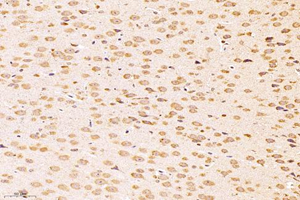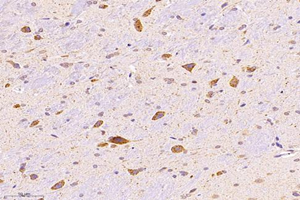Anti-Eph receptor A6 Rabbit pAb (100 μl)
| Reactivity: | M,R |
| Applications: | IHC |
| Host Species: | Rabbit |
| Clonality: | Polyclonal |
| Full Name: | Eph receptor A6 rabbit polyclonal |
Gene Name: | Ephrin type-A receptor 6 |
Synonyms: | EPH homology kinase 2, EHK-2, Epha6, Ehk2, EPH receptor A6, EPA6, PRO57066 |
Immunogen: | KLH conjugated Synthetic peptide corresponding to Mouse Eph receptor A6 |
Isotype: | IgG |
Purity: | Affinity purification |
Subcellular location: | Nucleus, Cell membrane |
Uniprot ID: |
Product Usage Information
Applications | Species | Dilution | Positive tissue |
IHC | Mouse, Rat | 1: 400-1: 800 | brain |
Background
The Eph family of receptors comprises the largest known family of receptor tyrosine kinases. Ligands of Eph family receptors are structurally related membrane bound proteins that can be subdivided into two major subclasses, ephrin A and ephrin B. Expression of Eph receptors is tissue specific and appears to be tied to developmental events. Ligands in the ephrin A subclass, including the prototype family member ephrin A1 (B61), are membrane associated through glycosylphosphatidyl inositol linkages, whereas ephrin B subclass consists of ligands with transmembrane domains. The general role of the Eph family is in mediating repulsive cell-cell interaction.
Images
| Immunohistochemistry analysis of paraffin-embedded mouse brain using EHK2 (GB113088) at dilution of 1: 800 |
| Immunohistochemistry analysis of paraffin-embedded rat brain using EHK2 (GB113088) at dilution of 1: 800 |
Storage
| Storage | Store at -20°C for one year. Avoid repeated freeze/thaw cycles. |
| Storage Buffer | PBS with 0.02%sodium azide,100 μg/ml BSA and 50% glycerol. |





